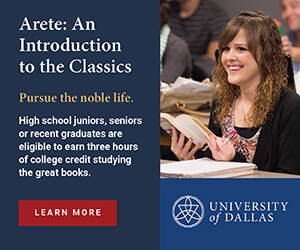Have you ever heard of the “Trolley Car” dilemma? On The Patrick Madrid Show, Patrick discussed this hypothetical quandary in the context of choosing who lives and who dies, and he tied it to the decision to drop the nuclear bombs on Hiroshima and Nagasaki in 1945. The Trolley Dilemma is a 2014 moral problem contrived by researchers that goes like this:
There is a malfunctioning trolley traveling along a track. It is out of control and unable to be stopped. Down the track, there is a fork that currently directs the trolley towards path A. You can see that there are five people stranded on path A and if nothing changes, they will be hit and killed by the trolley. In front of you is a lever which, if pulled, will switch the track so that the trolley will take path B instead. Stranded on path B is only one person who will be hit and killed by the trolley. Do you pull the lever?
The dilemma is focused on this choice because while pulling the lever might save five people, it is also dooming one person who would have otherwise been safe. Researchers proposed this situation because they were trying to determine which choices an autonomously driven car should make in a situation where an accident was guaranteed. In other words, they needed to program the car to make a decision to choose the least problematic option.
Besides the main premise, the programmers also looked into whether the car should prioritize the lives of humans over pets, passengers over pedestrians, more lives over fewer, women over men, young over old, fit over sick, higher social status over lower, law-abiding citizens over criminals, and whether a car should even swerve to avoid something and risk hitting something else or just stay the course.
The idea behind these decisions is that there is no “safe” choice. While there is a difference in the number of people dying, the probability of a fatality in either decision is 100%. So, there’s seemingly no positive way out of the problem. If you let the trolley run its course, you’re letting five people die without doing anything about it. If you pull the lever, you’re killing somebody in the place of those five.
If we find ourselves in such a situation, Patrick says, it is our duty to choose the best available option, the option that we deem to result in the least damage done. Of course, that’s more difficult to do than it is to say, but in terms of moral consequence, we are responsible. It might be easy to prioritize a human life over an animal life, but how do you choose between old and young, sick and healthy, 3 people versus 4 people? That’s where the principle of double effect comes into play. It states that when given no other choice, if doing something morally good (saving five people) has a morally bad side effect (one person dying), it is ethically okay, provided that the bad side-effect was not intended.
Listener Jim called in to ask, within the conversation of choosing who lives and dies, why Patrick believes that it was immoral to drop the atomic bombs on Hiroshima and Nagasaki. Patrick went on to say that even though the Japanese had been refusing to surrender and the nuclear bombs ultimately resulted in a good (the end of the war), the ends do not justify the means. In other words, if you carry out an evil act in order to accomplish a good, there will still be consequences for the evil act. It isn’t canceled out by the good. Patrick argued that it was immoral to choose Hiroshima and Nagasaki, primarily civilian locations, as the targets for atomic bombs, even if there was no other choice to end the war.
One might argue that Truman was simply choosing the lesser of two evils to end the war, just like pulling the lever to save five people. However, the principle of double effect does not apply to the case of the use of the atomic bomb for two reasons. Firstly, while Truman’s choice is often portrayed as binary, there were other options. We don’t know how effective they may have been, but there were more than two options. Secondly, the principle of double effect requires that you perform a good or neutral act that might unintentionally have a bad side effect. The dropping of the bomb was an evil act that resulted in the desired objective.
“If we were to go ahead and assume that the act was indeed evil, I know there’s no way to know, but how would you surmise that Truman and even the crew on that airplane that dropped the bomb would be judged?” asked Jim.
“‘The buck stops here,’ as [Truman] famously said. But, to what extent was his conscience properly formed? And to what extent was an unformed or not properly formed conscience his own fault?” asked Patrick. “There are all sorts of other questions that pertain to this. Thankfully, I don’t have to make that decision. The Lord alone knows the amount of personal culpability that President Truman had.”
Tune in to The Patrick Madrid Show weekdays 8am – 11am CT


